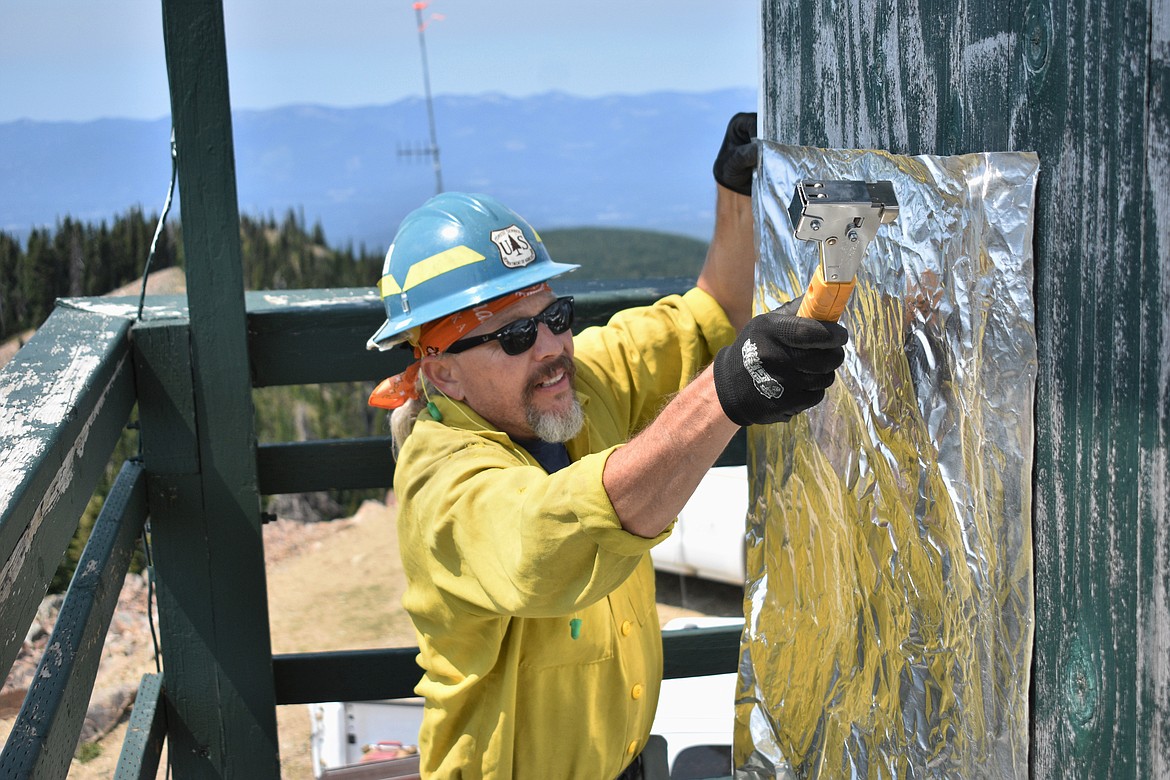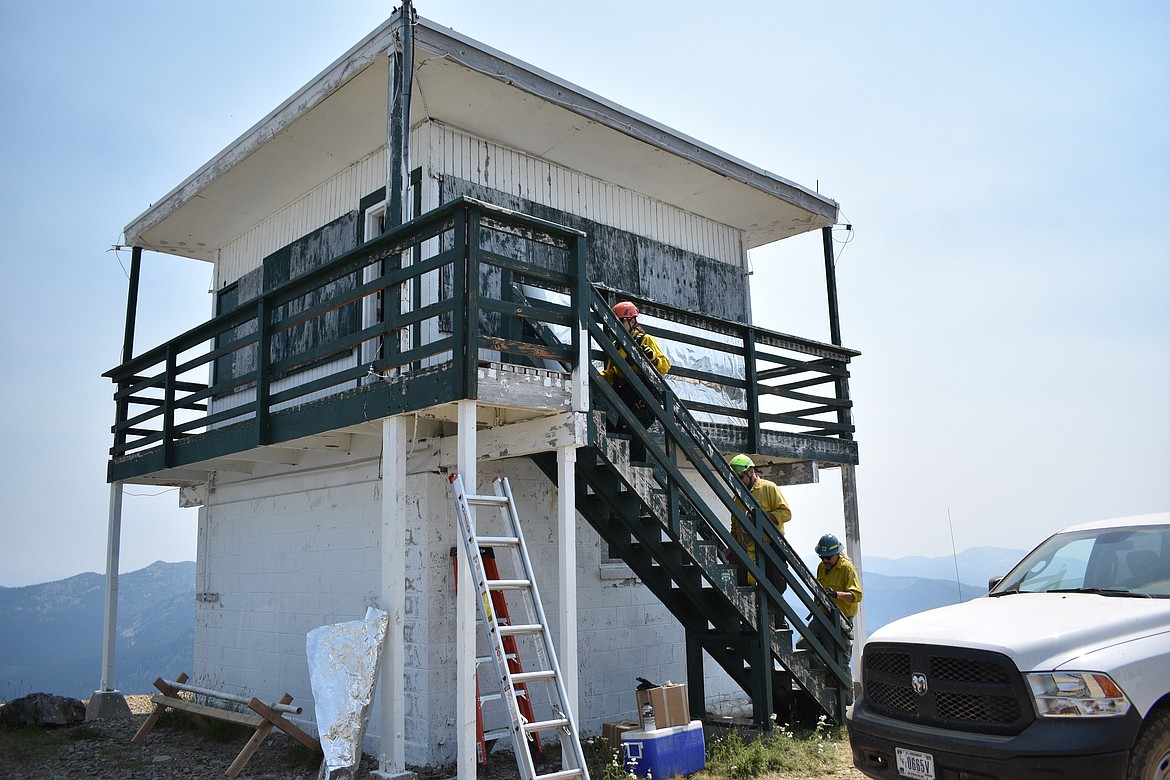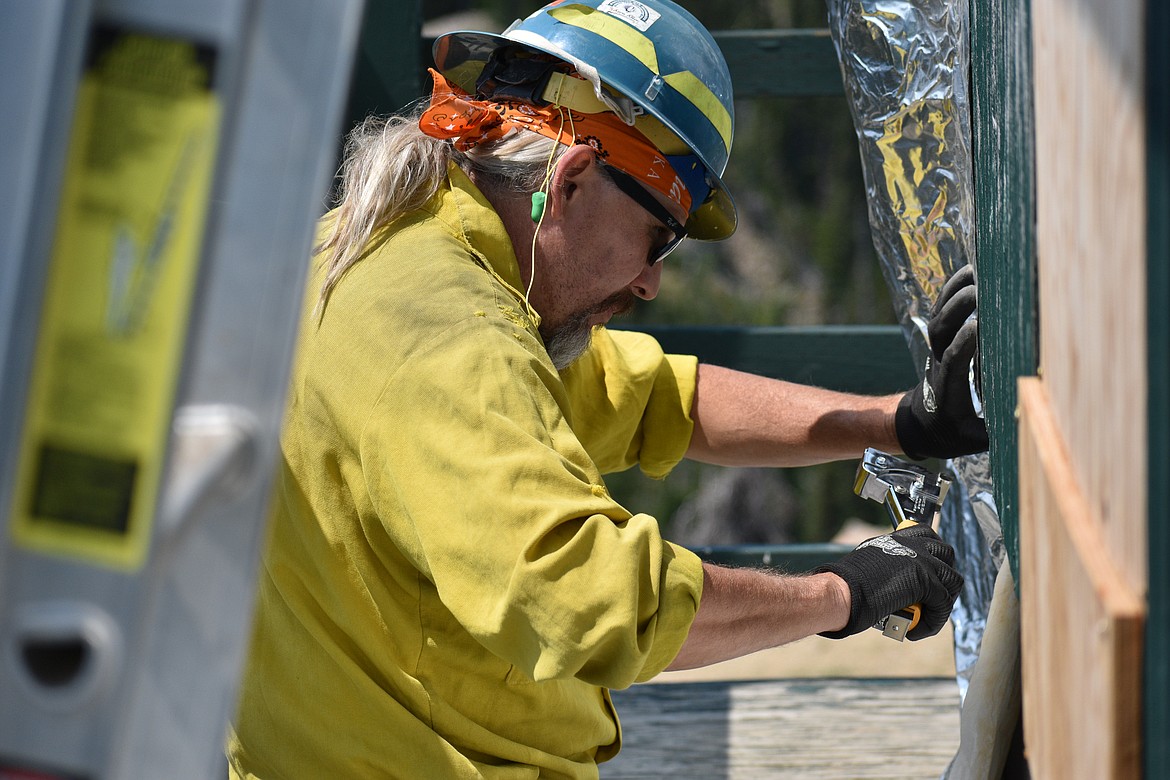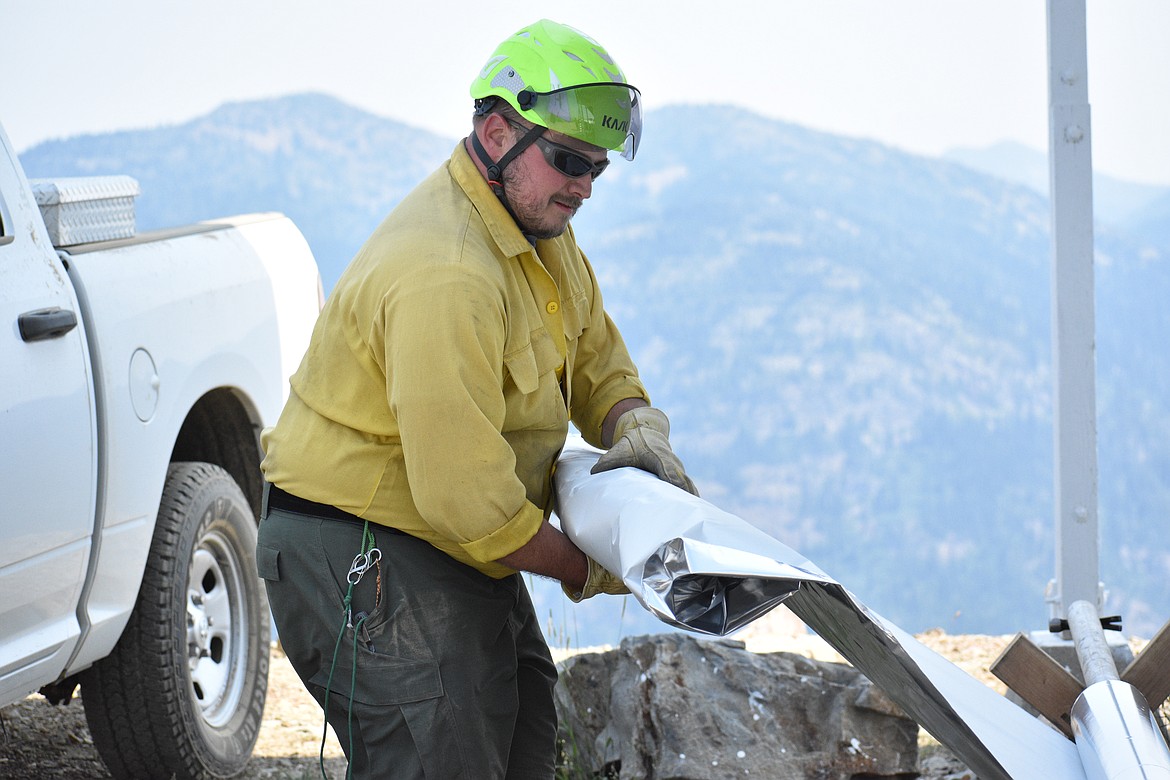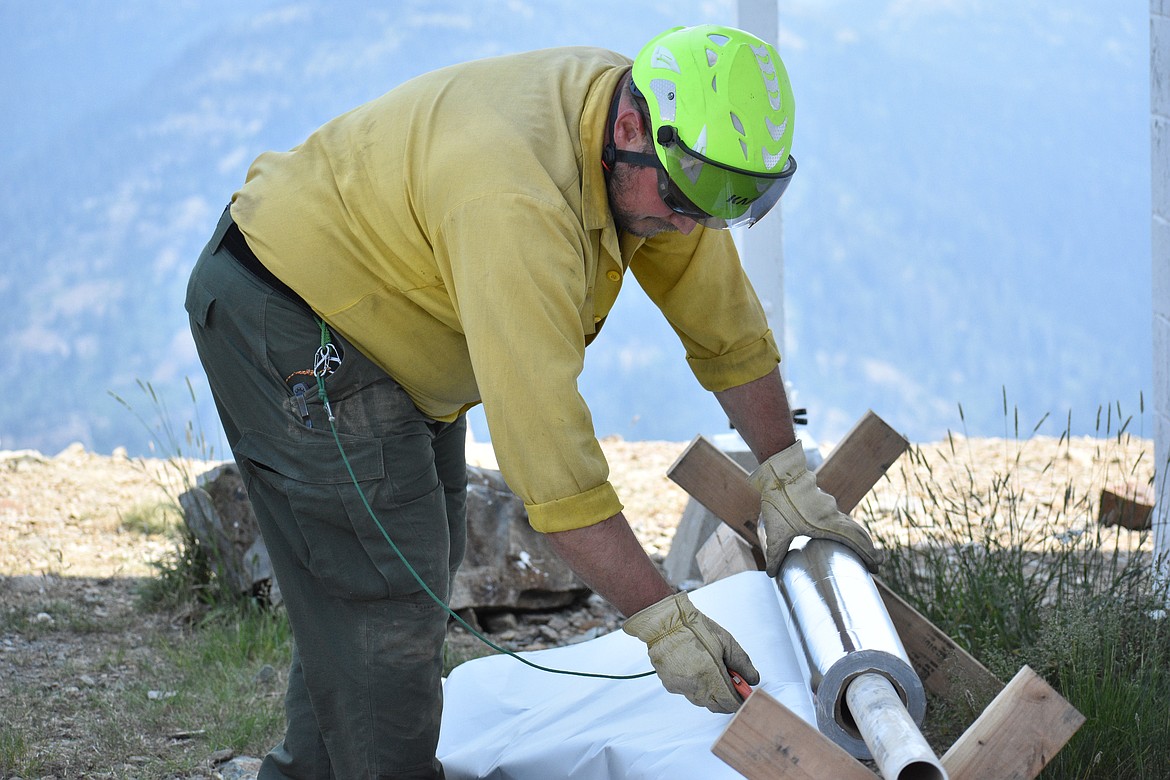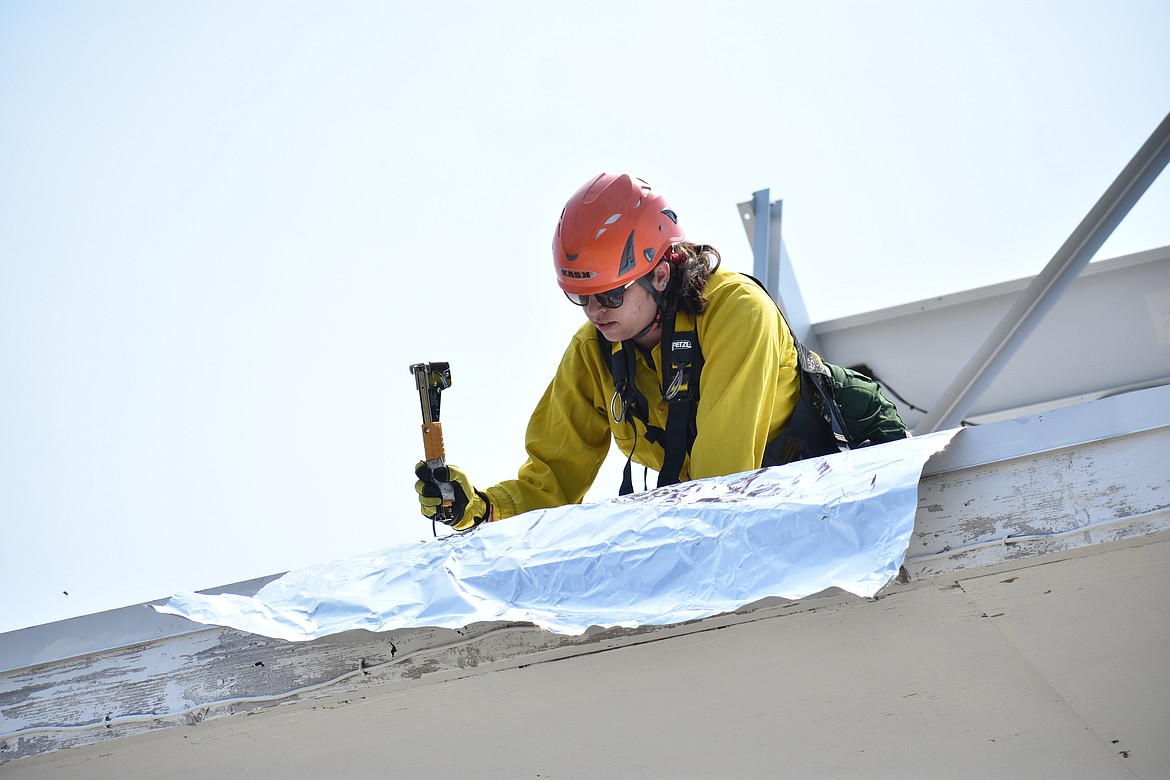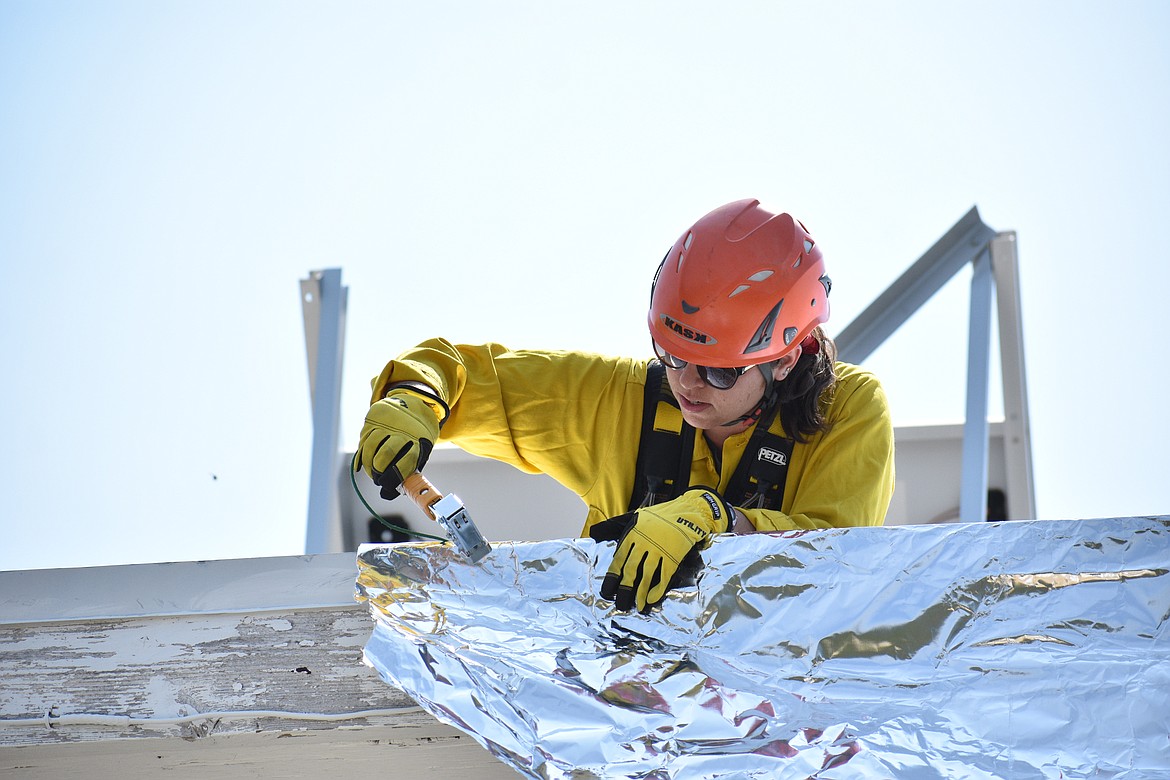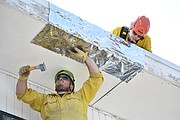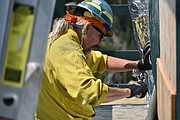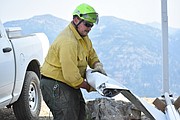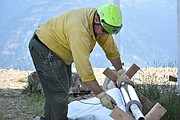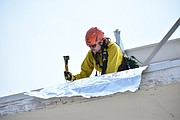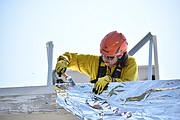Crew protects Lunch Peak Lookout from nearby fires
▶️ Listen to this article now.
HOPE — Nearly every day for the past week, Jess Harvey has traveled down to Hope to hand out daily updates about the Trestle Creek Complex fires to the public and put a face to the efforts.
From the marinas to the RV parks, Harvey continued to hear concerns about one significant landmark in the area — the Lunch Peak Lookout. People were wondering how close the fires were to the tower and if it was in danger.
Harvey is the public information officer trainee for the Nevada Type 3 Incident Management Team 3 currently overseeing the fires. Harvey said once the team realized how important the tower was to the community, they took steps to ensure it was protected from the nearby fires.
“We want people to know that even though the fire is not close to the structure, we have heard their concerns and we are doing everything we can to protect the asset that we know is very important to them,” he said.
That’s where the wrapping team comes in. The specialized crew arrived last week and is based out of U.S. Forest Service Region 4 (Intermountain), which covers national forests in southern Idaho, Utah, Nevada, western Wyoming, and parts of Colorado and California.
The team, created in 2015, has about 10 people they can draw from, but for the wrapping of the Lunch Peak Lookout and the snowmobile warming hut in the Moose Creek area they only brought three — Charley Rosier, Christian Goodlander and Jessica Goodwin.
Rosier works in lands and special uses for the Uinta-Wasatch-Cache National Forest near Salt Lake City. Goodlander is the forest safety officer for the Caribou-Targhee National Forest in Idaho Falls, and Goodwin is an archaeologist at the Boise National Forest.
Goodlander, who is the crew leader, said the Forest Service and Bureau of Land Management have been wrapping structures to prevent them from being damaged for years, but they realized they needed to implement equipment and training to avoid accidents when wrapping structures at heights.
That’s why all the members of the crew utilize industrial fall protection gear when operating above the ground. Goodlander has 20 years of experience with industrial fall protection and has helped train his team.
The crew began wrapping the snowmobile hut on Thursday and the Lunch Peak Lookout on Saturday. They finished both on Monday.
The crew covered every inch of wood on both structures in an aluminized fiberglass wrap, Goodlander said. They used hammer tackers to staple on the wrap and aluminum tape to close off any seams.
“It’s all to prevent hot embers from getting in and resting on the structure itself and potentially igniting it,” Goodlander said.
Once wrapped, the structures kind of end up looking like the leftovers you wrap in foil and stuff in your fridge.
“When a lookout tower is done, it looks like a big old giant baked potato,” Goodlander joked.
It seems simple, but the job can be dangerous when the crew has to climb on the roof of a tall lookout tower and wrap it. That’s where the industrial fall protection training and gear is necessary.
Rosier has been with the team since it started and he believes this is only the second time the crew has gone out of their region to wrap structures. North Idaho is in Forest Service Region 1.
This is the crew’s first assignment of the 2021 fire season and it’s also the earliest they’ve ever been sent out, Goodlander said.
Goodlander said 2019 and 2020 were quiet years for his team, but he remembers a time in 2018 when they had to do three separate wrappings back-to-back-to-back.
Currently, Harvey said they don’t anticipate the Trestle Creek Complex getting close to the warming hut or lookout tower, but they are planning for the worst and hoping for the best.
Given the age of the tower, if it were to be burned down it would be extremely difficult to find the funding to rebuild it, Goodlander said. That’s part of the reason why these measures are being taken.
“If it’s gone, it’s generally gone for good,” he said.
This specialized team will likely be back in a few months to unwrap the structures because they have the gear and experience to get it done.
Most of the structures the team wraps have historical significance and meaning to the community they are in. Preserving historic buildings is part of the mission for the Forest Service, Rosier said, and that’s why he does it.
“That was one of the first reasons I signed up to do this was because on the Uinta-Wasatch-Cache, part of my job is working on the historic ranger stations we rent out to the public … and so I have a vested interest in historic buildings,” he said.
For Goodwin, this is her first experience with wrapping a structure in the field. She said one of her co-workers got her interested in the team and she’s glad she joined.
“I definitely have a passion for trying to save our historic sites and a lot of these structures that we’ll be wrapping are on that list,” she said, “and this also gives me a chance to travel and see some of these buildings that I never would have seen otherwise … so I feel lucky to be a part of it.”
Goodlander said wrapping allows him to see parts of the forest most people don’t and the views can’t get much better.
“They only put lookouts in really great spots,” he said, “so you never get to a lookout and look around like, ‘This is a disappointment.’”
In terms of the fight against the fire, Wendy Markham, the planning section chief for the Nevada Type 3 team, said they have just over 80 people out on the line.
Those hand crews are comprised of firefighters from all over the country, including California, New Mexico and Indiana.
“This time of year with resources it’s like a big spaghetti bowl, they're just moving all over across the country,” she said about the firefighters.
With resources strained due to the number of fires burning across the West, Markham said most of their battle against the Trestle Creek Complex is being done on the ground. The fires received some air support this weekend, but haven’t received any dedicated air support, Markham said.
That makes things challenging for the firefighters, Markham said, but they continue to make progress every day.
“They’re literally out there fighting the fire with their blood, sweat and dirt,” she said.
“Those guys are true heroes that are out there on that front line,” Harvey added.
Markham has been helping fight fires since 1992 and has witnessed fire seasons like this one, but believes they are becoming more common earlier in the year and lasting much longer.
Terrain is also making it difficult for firefighters to reach Trestle 6, the largest fire in the complex, Harvey said. In some places the brush is 10 feet tall, he said, and there are no access points in terms of carved out trails or roads.
Crews have started to make their way into Trestle 6, but Harvey said they have to be careful because their top priority is the safety of the firefighters.
“It’s impossible for us to get people back into some of these places,” he said, “and sometimes when you’re in an area like that, if you try to cut your way back in there you actually make things worse because then you give the fire an easier way to get through or you cut yourself back into a situation and you don’t have an easy escape anymore and if that fire gets out of hand, you’re putting lives at risk.”
Harvey said Trestle 6 is slowly making its way down toward Lightning Creek Road and they are making preparations to fight the fire there while also trying not to impact the stream filled with bull trout next to it.
“That’s kind of when we're going to make our stand,” he said.

